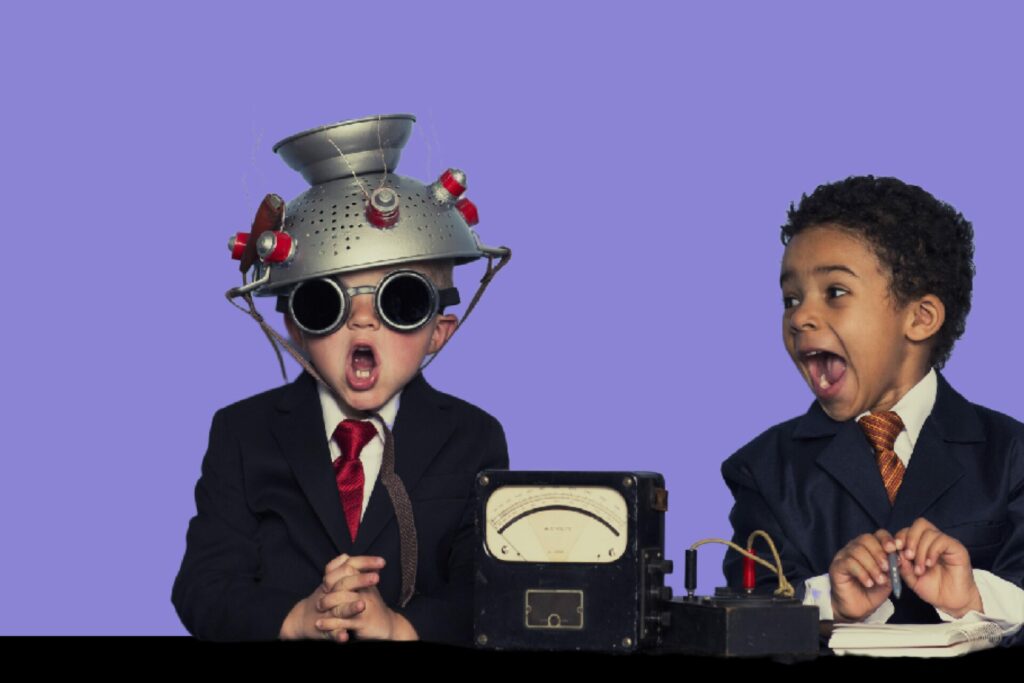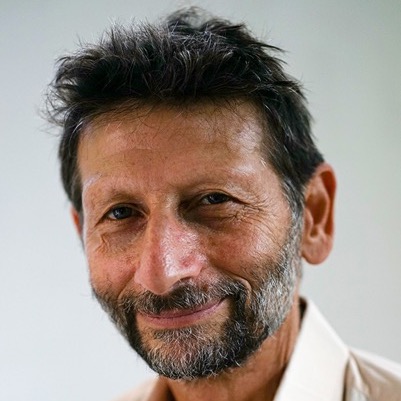Humor needs to find its way into American schools. Delegated to recess and the schoolyard, it is rarely elevated as something worthy of analysis and study within the classroom.
David Penberg, Leader-in-Residence, 2Revolutions
There’s lots of work and talk these days about social and emotional learning — about the need for resiliency, grit, and determination. The mental health crisis amongst students and teachers is real. But, in those public conversations, there’s hardly any reference to humor and happiness — as coping mechanisms, as well as ways of experiencing the world. Have you ever wondered why? While waiting in line at my neighborhood food market last week, I was reminded of how toddlers have the magical power to make even an 11-year-old pouty older brother giggle with unself-conscious glee in a checkout line.
Is there anything more specific or salutary to life than the capacity to laugh? Yet, the topic of humor — as something to examine, talk about, and understand — remains conspicuously absent from school. Rarer still are mentions of it in any discussion around educational reform. Reflections on the purpose of education often center on core curriculum, standards, test scores, and student outcomes, but there’s a complete lack of sensible conversation about well-being and what might make people happy — including the ability to laugh.
Laughter and happiness are objective dimensions of human experience. And, as products of school, we all know skills and knowledge are not enough. As educators, we also have a fundamental role in shaping dispositions. In other words, if people are to flourish and be happy, they need to gain various dispositions or virtues that enable them to do so, and educators need to support and lead them in this pursuit.
In her wonderful 2003 book Happiness and Education, Nell Noddings, one of the great educational thinkers of our time, poses this challenge to educators: “Happiness and education are properly, intimately connected. Happiness should be an aim of education, and a good education should contribute significantly to personal and collective happiness.”
Would it not stand to reason then, that a priority be placed upon laughter and the pursuit of happiness in schools?
Reflecting on my own life, I realize it was not patience and openness that I gathered from my father (my mother is that source) but the gifts of laughter and play. He was a post-depression, archetypal trickster from the Bronx, for whom wit and sometimes guile were developed to not only navigate but also appreciate life. For this, my gratitude is immense because humor and laughter have enabled me to make visceral connections with others across cultural and geographic boundaries.
We don’t have to take ourselves so seriously all of the time. A little bit of vulnerability goes a long way, especially when relating to learners.
David Penberg, Leader-in-Residence, 2Revolutions
There are many layers and dimensions to humor that can serve as entry points to cultural understanding. Have you ever considered finding out from your learners what makes them laugh and how they determine what is funny? Or why some things are seen as funny in one culture and inappropriate in another? Are there protocols for jokes, a kind of cultural manual for how to tell funny stories and use humor, that vary from culture to culture?
There is an important connection between social critique and humor that runs from Aristophanes to Lenny Bruce. Haven’t some of our finest and most perceptive social critics been those who have used the veil of humor to challenge and unsettle us? Satire is one of the great traditions in American culture as evidenced by the work of Mark Twain, Russell Baker, and Art Buchwald. Have we heard more piercing and perceptive questioning of America than from the mouths of Mort Sahl or Richard Pryor? Even in children’s books, such as the Amelia Bedelia franchise, humor and wordplay are at the core of what captures our young readers’ attention. In our culture, humor is as vital an art form as literature, poetry, music, dance, or the visual arts. Yet, it remains absent from school life and the formal curriculum.
How many of us can recall a teacher who deployed humor as a tool for learning? While I could include a list of tools that range from tongue twisters to pantomime, I see humor as a mindset. We don’t have to take ourselves so seriously all of the time. A little bit of vulnerability goes a long way, especially when relating to learners. Humor can be used as a relationship stance, creating a feeling of ease and mutual regard between educators, mentors, and learners. Teachers who take themselves and their classrooms too seriously rob kids of one of human beings’ healthiest attributes: laughter.
Research has shown that laughter not only has physical benefits, but cognitive benefits as well, such as problem-solving, creativity, and critical thinking. This continues into adulthood as well, with the long-term benefits of laughter, including an improved immune system, reduced pain, and increased personal satisfaction.
Humor needs to find its way into American schools. Delegated to recess and the schoolyard, it is rarely elevated as something worthy of analysis and study within the classroom. Imagine the result if professional development sessions looked at helping kids to laugh more. Maybe test scores would rise or incidents of bullying and hate crimes would decrease. Imagine classrooms transformed from dour sites of enforced boredom to sites of unabashed happiness — classes full of engaged lives able to laugh at the nuances of life. Imagine learning coping skills while studying the Marx Brothers. This is the type of learning environment I hope our children can learn and laugh in.

